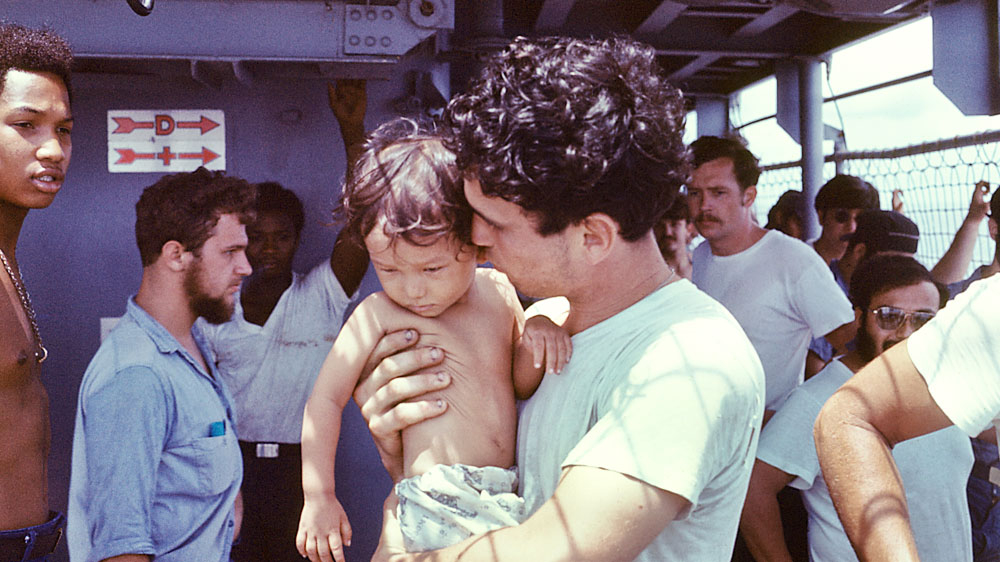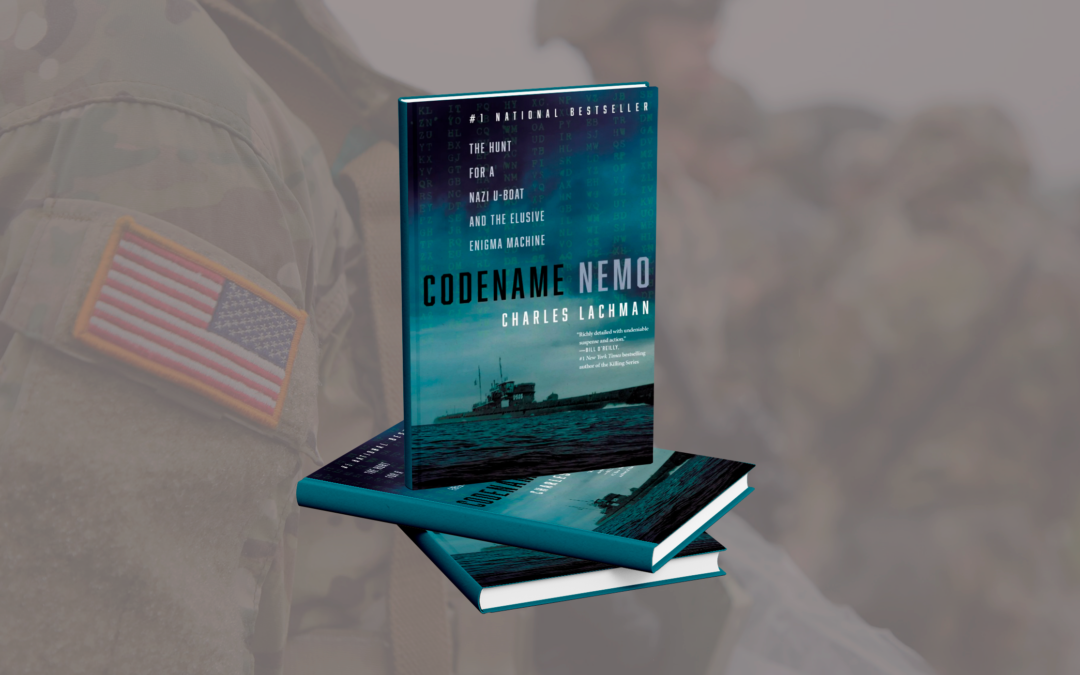During World War II, the glimpse most Americans got of the real war and the American combat soldier who fought it came through the cartoons of infantry Sgt. Bill Mauldin. Week after week, Mauldin defied Army censors and Gen. George Patton's pledged to "throw his a** in jail" to deliver his wildly popular cartoon, 'Upfront' to the pages of Stars & Stripes and hundreds of newspapers back home. Bill Mauldin: The Voice of the Common Soldier His cartoon character were Willie and Joe, two...
The Christy Collection
Military Stories and Articles

The Amazing Story of the USS Kirk
Launched in September 1971, the destroyer escort USS Kirk (FF-1087), with a compliment of 18 Officers and 267 Enlisted, sailed the high seas of the Indian Ocean, South America and much of the Pacific Ocean, including the waters off Vietnam. USS Kirk's Unexpected Humanitarian Mission She was a warship in every sense: an efficient, deadly fighting machine with the mission of hunting down, pursuing and destroying her submarine prey. Yet her finest hours were spent tending pregnant women, soothing...

Famous Army Unit: Project Delta
Since the beginning of warfare military leaders knew their greatest chance of winning on the battlefield is to know where the enemy is, how great in strength and what they were planning to do. It was certainly no different with Vietnam commanders. To gain useable and timely intelligence on local enemy forces, Vietnam infantry commanders created "unauthorized" or off the book reconnaissance units to penetrated deep into enemy-held territory. So successful were these forays by these small,...

Codename Nemo by Charles Lachman
On June 4, 1944, the escort carrier USS Guadalcanal and its escort destroyers picked up a sonar ping. A U-boat was hiding off the coast of Cape Verde. U.S. Navy Captain Daniel V. Gallery was in command of his second hunter-killer cruise as skipper of the Guadalcanal. Having already sunk three U-boats, he was determined to capture one and get the trove of valuable intelligence information hidden aboard it. He was so ready to make history; he had several boarding teams and a film crew ready and...

VA Updates: What Can I Do to Help Expedite My Claim For My Veterans Benefits From VA?
Applying for disability compensation from the U.S. Department of Veterans Affairs (VA) can be time-consuming and frustrating. This frustration is made worse by the time it takes to get a decision. Often, this wait is extended because needed information is missing. When that happens, additional time passes as the Veteran and VA search for that information. One way to avoid this additional time and help the VA complete your claim faster is to present all the information needed when initially...

WO1 Craig Morgan, U.S. Army (1982-1997, 2023 – Present)
Craig Morgan, the renowned country music artist, is known for his remarkable military service. Before pursuing a successful career in the entertainment industry, Morgan dedicated over a decade of his life to serving his country in the United States Army. Rising through the ranks, he served as a member of the 82nd Airborne Division and later as a member of the 101st Airborne Division. Today, Craig Morgan continues to significantly impact military organizations through his advocacy and support...

SSgt Salvatore Giunta, U.S. Army (2003-2011)
On October 19, 2007, American and Afghan forces loaded up onto UH-60 Black Hawk and CH-47 Chinook from Afghanistan's Korengal Outpost. The mission was Operation Rock Avalanche: an insertion into the southern area of the Korengal Valley to prevent Taliban fighters from fleeing the region while reducing their ability to operate against U.S. and friendly troops there. Salvatore Giunta: The Second Deployment to Afghanistan This was Salvatore Giunta's second deployment to Afghanistan. During his...

Famous Marine Corps Unit: 1st Marine Raider Battalion
"Always Faithful, Always Forward" The Early History of the 1st Marine Raider Battalion The year was 1942, and a new type of unit was born in the US Marine Corps. Edson's 1st Raider Battalion was designated, and several days later, Carlson's 2d Raider Battalion was named. Later in the year, Liversedge's 3rd Raider Battalion and Roosevelt's 4th Raider Battalion were created. One hundred seventy-five members of Marines TWS are part of the United States Marine Raiders Association as members of one...

Vince Speranza’s Epic Beer Run During the Siege of Bastogne
The Siege of Bastogne was one of the most crucial fights of World War II, and it came amid the largest battle the U.S. Army has ever fought – the Battle of the Bulge. The Germans caught the Americans by surprise on Dec. 16, 1944, mustering more than 400,000 men, 550 tanks, and hundreds of other vehicles for one last offensive. The goal was to push the Allies back toward the sea and recapture the critical port of Antwerp. The Siege of Bastogne: Defending Against the German Forces German forces...

The First Battle of Fallujah
In the earliest years of the Iraq War, the city of Fallujah was one of the most contested cities in the country, but it didn't start out that way. Local citizens had taken control of maintaining order in the city, but a series of misunderstandings between Coalition forces and local leaders soon led to violence and outrage. At the end of March 2004, four private military contractors were massacred and mutilated by insurgents there. The same day, five American soldiers were killed by a massive...

Famous Coast Guard Unit: USCGC Ironwood (WAGL/WLB-297/NRPN)
On March 31, 1941, Marine Iron and Shipbuilding in Duluth, Minnesota, laid the keel for the first Coast Guard vessel of a Mesquite new buoy tender class, joining the so-called "Black Hull" fleet. The new vessel measured 180 feet overall and had a beam of 37 feet at the extreme. She had a displacement of 935 tons and drew 12 feet. Marine Iron and Shipbuilding made all but one, the Coast Guard cutter Ironwood (USCGC Ironwood), coming in for $1,388,277, was built at the USCG yard in Curtis Bay,...

VA Updates: Are You Eligible for Disability Compensation?
A frequent topic in conversations with Veterans is how they were injured in service and whether they are eligible for benefits. Generally, they point out they didn't serve in combat but were injured while in service. Their question is, given their experience, "Am I Eligible for Disability Compensation?" Eligibility Criteria for Disability Compensation The specific benefit they are referring to is Disability Compensation. This is a tax-free monthly payment for Veterans who have suffered an...